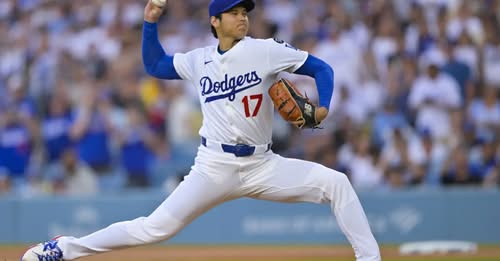Shohei Ohtani’s journey with the Los Angeles Dodgers began in December 2023, when he signed a historic, record-shattering 10-year, \$700 million contract. What makes this agreement especially unique is its structure: just \$2 million annually is to be paid during his playing years from 2024 through 2033, with the remaining \$680 million deferred until 2034 through 2043, paid out in \$68 million installments each year. This clever financial arrangement dramatically lightens Los Angeles’ immediate salary burden while giving Ohtani a future financial windfall—one he can defer until well past his playing days.
Throughout the buildup to and signing of that contract, Ohtani made it significantly clear that he intended to play out all ten years. In interviews, he explained that he still wanted to be active in baseball when he was 39 or 40, expressing his enduring love for the game and his desire to avoid burnout or resentment as time passes. That statement of intent resonates directly with the idea that he wants to pitch throughout the entire span of his Dodgers tenure—even the final eight years starting now in 2025—assuming his health and effectiveness allow.
The Dodgers themselves benefit enormously from this structure. Ohtani’s willingness to defer his salary was pivotal: by lowering his immediate salary to just \$2 million a year, the Dodgers gained significant luxury-tax and competitive balance tax flexibility, enabling them to build around him and make aggressive roster investments. Indeed, his contract’s deferrals helped the team bolster its starting rotation, retain key stars like Mookie Betts and Freddie Freeman, and maintain its position as one of baseball’s super-teams. Reports suggest Ohtani himself proposed the deferred structure as a way to aid the team’s short- and mid-term competitiveness, saying in effect, “I don’t need it now.” His agent stated that everything Ohtani does is unique and impeccably well thought out.
But of course, talk of his pitching capabilities brings health into the conversation. Ohtani underwent elbow surgery prior to the 2024 season, effectively sidelining him from pitching that year though he still performed as a designated hitter, producing a phenomenal offensive season that included membership in the 50-50 club and a World Series title—along with a unanimous National League MVP award. He then suffered a torn labrum in his left shoulder during the World Series and underwent surgery to repair it. That looming shoulder recovery and past elbow surgeries introduce understandable uncertainty around his ability to pitch in the future.
Yet the underlying desire remains: Ohtani wants to pitch. He said as much through his contract stance and life-plan mindset. Given that he expressed a strong intent to play deep into his 30s, and that his contract spans those exact years, it’s logical to see the remaining eight years—after the first two of 2024 (DH-only) and 2025 (recovering)—as years he would love to contribute on the mound, not just at the plate.
Furthermore, his avoidance of a longer deal—turning down 13- to 15-year offers—also reflects his respect for the game and his own performance arc. His agent noted Ohtani didn’t want to be a shell of his former self in the twilight of an overly long career that might leave fans wondering, “Who is this guy anymore?” This devotion to preserving his integrity dovetails with his dream of continuing to pitch effectively and joyfully until the contract ends.
He also built in a rare opt-out clause—triggered only if a key Dodger executive like Andrew Friedman or owner Mark Walter were removed from the organization—indicating that he wanted long-term continuity to align with his long-term goals. That sort of stability could only bolster his ability to pitch deep into the contract, as he’d want consistent team leadership and philosophy over time.
Let’s also consider timing: as of 2025, he will have completed one year purely as a DH. Given the expected pace of his shoulder recovery, many expected he could return to the mound in 2025 or 2026. If he does, and if he can sustain health and effectiveness, there remain eight seasons to pitch—2026 through 2033. That aligns with his expressed intent to remain active, supported by the contractual alignment and his personal values around performance, team’s competitiveness, and enjoyment of the game.
The deferred payment timeline—from 2034 to 2043—also underscores this long-view approach. Ohtani isn’t just protecting himself for financial security but is pacing his career in such a way that when he is pitching in maybe eight or more remaining seasons, he’s still in his prime or near it. And when performance inevitably winds down, his income from the Dodgers will continue at full strength—decoupled from his performance and reliant on the contract’s deferred structure.
To summarize, Shohei Ohtani’s desire to pitch for the remaining eight years of his contract with the Dodgers is consistent with his career philosophy and contractual design. He structured his deal to maximize team competitiveness, provide him long-term financial security, and align with his desire to play deep into his 30s—not just as a hitter, but always as a two-way threat. His surgeries—elbow and shoulder—introduce uncertainty, but his intent is clear: he wants to pitch. The Dodgers clearly structured the contract with that ambition in mind, and the deferred structure, lack of opt-outs (save rare exceptions), and his own public statements all reinforce that he expects to—and wants to—step onto the mound for the remaining eight years—with health, performance, and baseball’s integrity intact.



